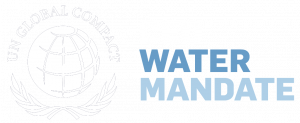This guide outlines a set of elements for setting effective water targets at the site level, informed by the catchment context. In most cases, these elements will be best met when site target-setting takes places as part of a company’s broader water strategy and vision to advance its water resources management practices at high priority sites. Therefore, the information provided herein does not replace the need for companies to optimize their water management, measure risks and impacts, or work with stakeholders across its value chain to advance water stewardship. On the contrary, setting site water targets complement these activities by guiding a site’s actions at the local level to deliver the greatest benefit to the catchment and value to the company (Table 1).
Site targets can provide several benefits to the company. They can help align various stakeholders around water challenges, prioritize opportunities for companies to engage in water stewardship, and contribute to meaningful risk reduction and collective action at the catchment level.
While there are benefits to using the elements and actions proposed herein, several challenges need to be confronted, including:
- Limited data for determining the water challenges and desired conditions;
- Need for updating over time as the conditions of the site and catchment change;
- Potential difficulty to track a site’s impact on environmental thresholds, since details on threshold calculations are not robustly included in this guidance; and
- Significant impact on the catchment will likely require other users to also set targets informed by catchment context.
The elements outlined offer many entry points and ways in which companies can set targets, depending on their resources, capacity, and expertise. Regardless of the pathway chosen, companies should always strive to:
- Link site targets to overall water risk, which includes consideration of operational risk and catchment risk;
- Focus on water challenges of greatest relevance;
- Engage stakeholders at all stages during target setting, from identification of water challenges to agreement on metrics and appropriate targets;
- View target-setting as an iterative process, both when working through each of the elements outlined in this guide and once targets are set; and
- Use the best available science, policy objectives and leading practices.
Given the shared nature of water challenges, it is likely that other stakeholders in the catchment may have similar goals. Stakeholder engagement is therefore a crucial part of all the preceding elements and is critical to the proposed target-setting process. The site should leverage the knowledge of stakeholders when determining priority water challenges; aligning on the desired condition; understanding a site’s contribution, relative to other water users; identifying existing collaborative efforts; setting targets; determining implementation strategies; and measuring progress. This guide is meant to be updated over time, based on feedback from users and other stakeholders, and maintain alignment with other initiatives.
